Chapter 14: Cell Division
Cell Continuity
Cell continuity means that all cells develop from pre-existing cells.
It is the ability of cells to divide and survive from one generation to the next.
Chromosomes
The nucleus contains thread-like structures callec chromosomes, made of DNA and protein.
Chromosomes are coiled threads of genes, DNA (which forms genes) and proteins that become visible in the nucleus at cell division.
Humans have 46 Chromosomes in every cell, made up of 23 pairs (somatic cells).
Except sex cells (gametes): these cells have 23 chromosomes in their nucleus.
Haploid Cells
A haploid cell has one set of chromosomes. This means that it has only one type of chromosome in its nucleus.
Haploid is symbolised by the letter ‘n‘ and the number of chromosomes in the cell is given as n = 23.
In humans, eggs and sperm are haploid n = 23.
Diploid Cells
A diploid cell has two sets of chromosomes. This means that it has two types of chromosomes in its nucleus.
Diploid is symbolised has ‘2n’ and total number of chromosomes in a cell is given as 2n = 46.
Homologous Pair
Homologous pair consists of two chromosomes that each have genes for the same features at the same position.
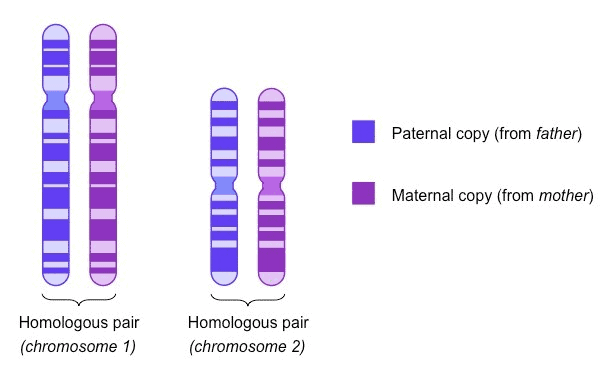
Genes
The length of chromsomes are made up of genes, which consist of many units of DNA.
Genes contain instructions for the formation of proteins.
Many of these proteins are enzymes.
Enzymes control the activity of the cells.
Chromosomes basically control the cell.
Genes are also said to be the unit of inheritance, with each gene controlling the development of a particular characteristic or trait of an individual.
Each gene has a specific place (locus) on a certain specific chromosome.
All the genes in an organism make up are genome.
The Cell Cycle
The cell cycle is the process a cell goes through each time it divides.
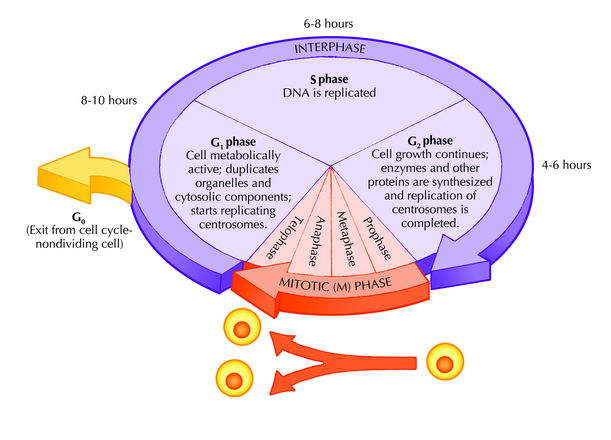
Interphase
Interphase is the phase in the cycle when the cell is not dividing.
Interphase is the phase in the cell cycle - 90% of a cells life is in interphase.
During interphase chromosomes are very elongated - they appear as a mass of material called chromatin.
During interphase cells are very active.
Early interphase: Cells produce new mitochondria and chloroplast. Also formation of enzymes and other proteins essential for growth.
Late interphase: Chromosomes produce identical copies of themselves.
Mitosis
Mitosis is a form of nuclear division in which one nucleus divides to form two nuclei, each containing the same number of chromosomes with identical genes.
Each new cell is called a daughter cell.
The two cells are identical - meaning they have the same number of chromosomes and the same genes present on the chromosomes.
There are four phases involved in mitosis:
Prophase
Metaphase
Anaphase
Telophase
Prophase:
Chromatin contracts to become visible double stranded chromosomes.
These double-stranded chromosomes are called sister chromatids. Chromatids are joined together by a centromere.
The nucleus disappears (assemble ribosomes)
Spindle fibres appear.
This spindle has a centriole at either end of it. The locations of these centrioles are at either side of the old nucleus. These are known as the poles.
Nucleolus breaks down.
Nuclear membrane breaks down.
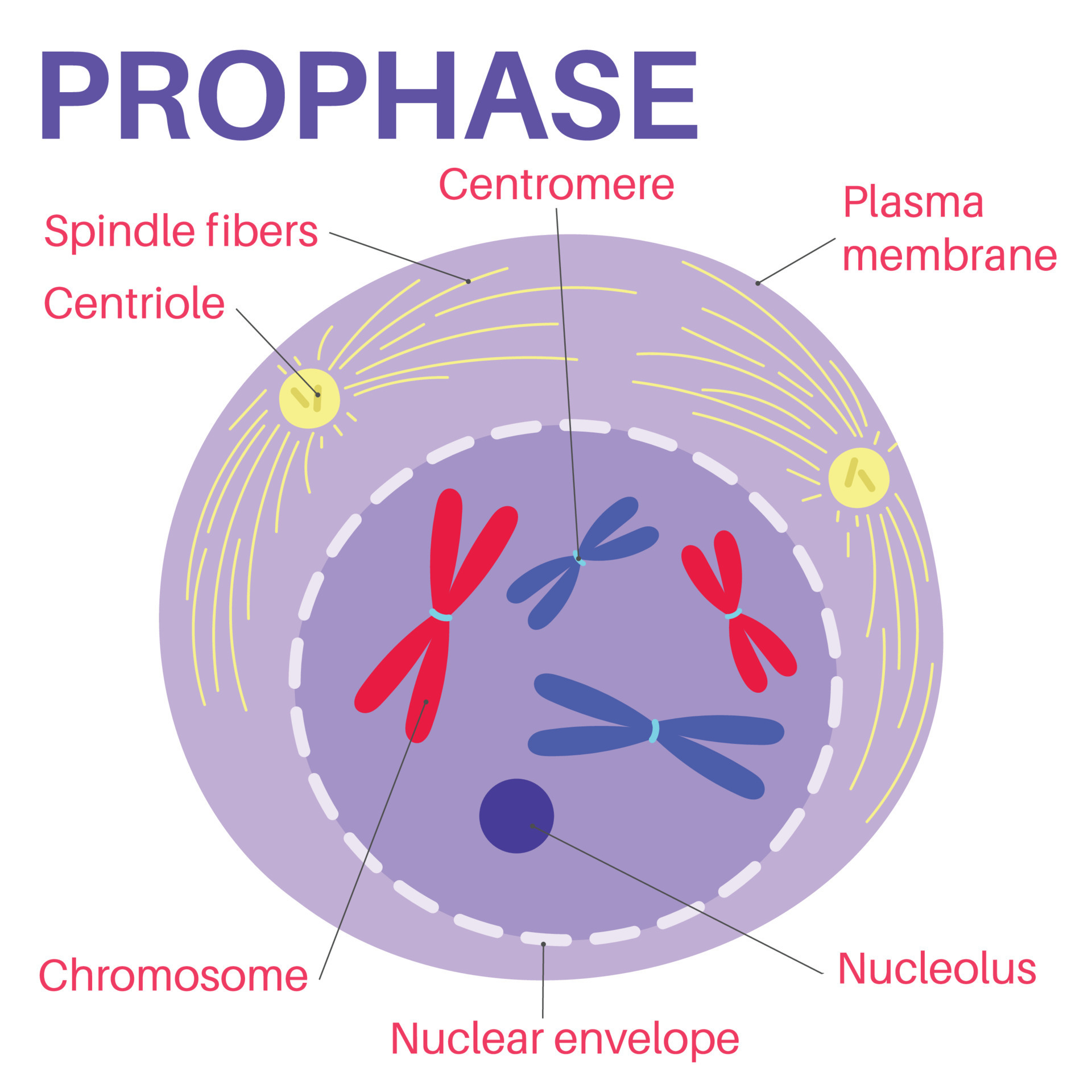
Metaphase:
The nuclear membrane completes its breakdown.
The chromatid pairs migrate to the centre of the cell (equator).
Spindle fibres from each pole attach themselves to the centromere of the sister chromatids.
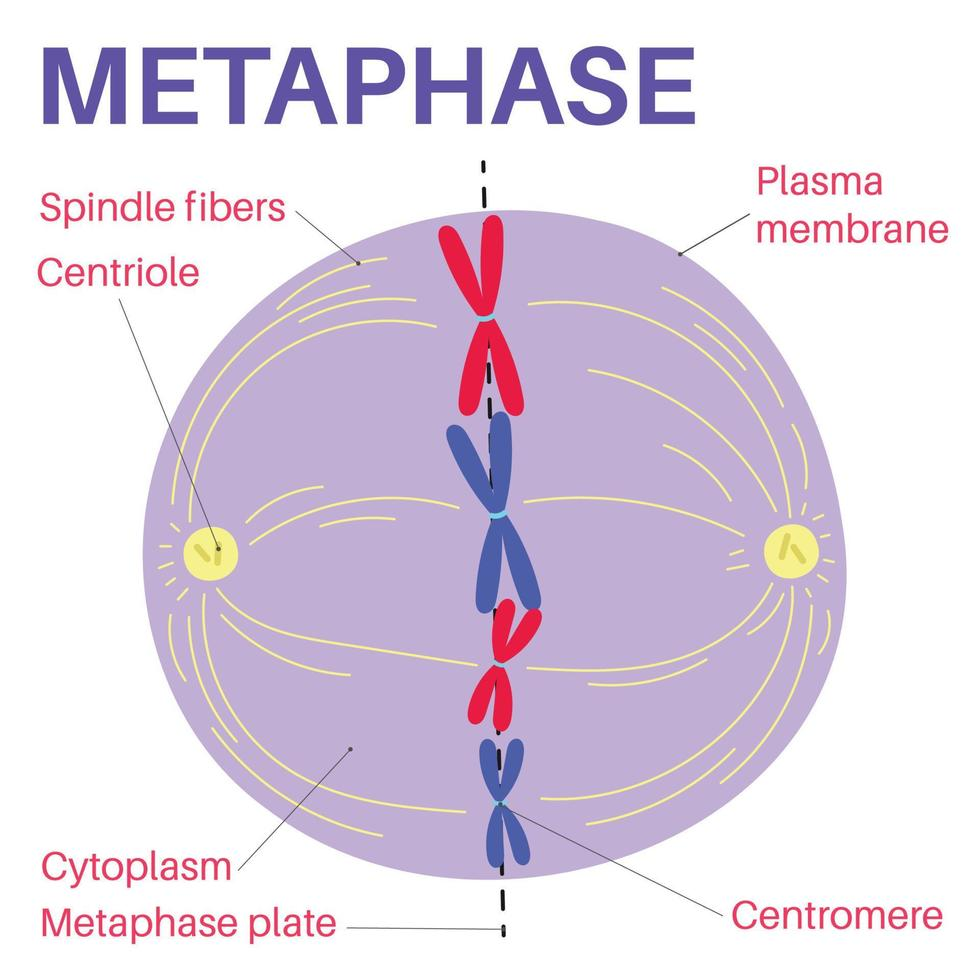
Anaphase:
At the beginning of anaphase the centromere of the sister-chromatids split.
Spindle fibres attached to the centromere then contract - pulling the chromosomes to the poles.
the poles are more further apart.

Telophase:
(basically all the processes that ocurred in prophase are reversed)
The spindle fibres disassemble.
Nuclear membrane forms around each new nucleus. One or more nucleus reforms.
Chromosomes uncoil and lengthen and become hard to distinguish (Chromatin)
The cytoplasmic division of cells is called a cleavage. As the membrane around the middle of the cell is drawn inwards it forms a cleavage furrow. The furrow gets deeper and deeper until the cell splits into two new identical cells.
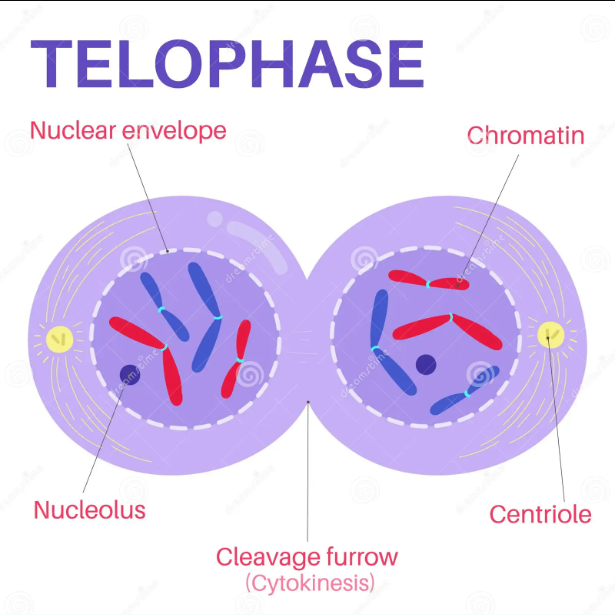
Cytokinesis:
At the end of telophase the parent cell splits into two daughter cells. This splitting is called cytokinesis.
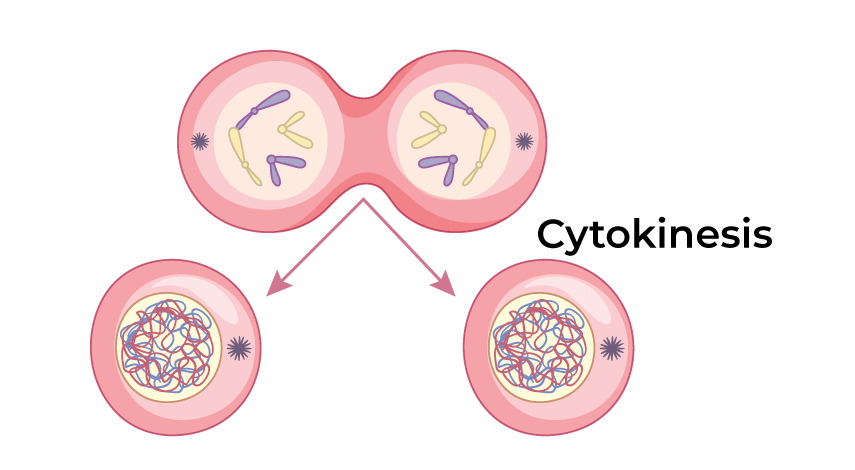
Cell Division in Plants
A plant cell cannot cleave in the same fashion because it has a rigid cell wall.
Instead, small membrane sacs (vesicles) migrate to the equator of the original cell.
These vesicles contain cellulose and other chemical required to make the cell wall and cell membrane.
The vesicles fuse to produce a cell plate. Two cell walls form within the cell plate, one for each of the adjacent daughter cells. The region between the plant cell walls is called the middle lamella.
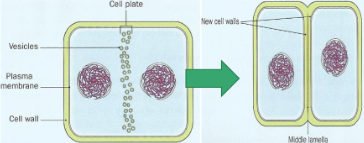
Functions of Mitosis
Unicellular Organisms
Single celled (unicellular) organisms such as Amoeba use mitosis for reproduction. Two identical daughter individuals are produced.
Mitosis is the basis of asexual reproduction.
They have one parent, identical offspring, no genetic diversity, but reproduce quickly.
Multicellular Organisms
In multicellular organisms mitosis is used for growth of the individual by forming new cells.
Mitosis is also used for repair by the replacement of old/damaged cells.
Cancer
Cancer may be defined as a group of disorders in which certain cells lose their ability to control both the rate of mitosis and the number of times mitosis takes place.
Benign Tumours
Benign tumours stop dividing after some time. They are caused by viruses. e.g. warts, skin tags
Malignant Tumours
Cancer results in the uncontrolled multiplication of abnormal cells. These abnormal cells form a malignant tumour.
Malignant tumours (cancers) invade other cells and move around the body.
Movement of these cells is called metastasis.
Cancer cells divide indefinitely (immortal)
Causes of Cancer
Cancer occurs when normal genes are altered to form cancer-causing genes (oncogenes).
These alterations come about by carcinogens.
A carcinogen is any chemical, biological or physical agent that can cause cancer. e.g. cigarette smoke, asbestos, UV light, certain viruses
Treatment of Cancer
Most cancers can be cured.
Treatment includes surgery, radiotherapy, and chemotherapy.
Meiosis
Meiosis is the division of the nucleus which produces four daughter nuclei, each containing half the chromosome number of the original cell.
Occurs in the gonads (ovaries/testes) of animal cells.
Gives rise to genetic variation.
Produces gametes (eggs and sperm).
The gametes that meiosis produces are haploid cells. they contain one set of chromosomes (n = 23) - half the number of the parent cell. The diploid (2n = 46) is restored when to gametes fuse to form a zygote.
The haploid cells produced are not identical as the chromosomes undergo a process called genetic recombination. This allows for the variation in the off-spring produced.
There are 8.4 million combinations.